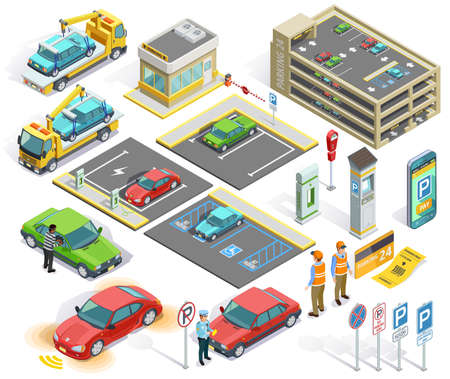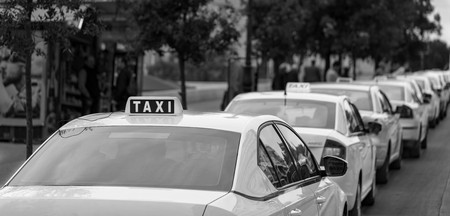1. Introduction: The Evolution of Car Shows
Car shows have always been a cornerstone of automotive culture, bringing together car enthusiasts, manufacturers, and industry professionals. Traditionally, these events featured exhibitions, live car reveals, and meet-and-greet opportunities with industry experts. However, as technology and social media continue to evolve, the car show experience has undergone significant changes.
From Physical Gatherings to Digital Experiences
In the past, car shows were primarily held in large convention centers or outdoor venues, where attendees could see the latest car models in person. Today, technology has transformed these events into a mix of physical and digital experiences. Livestreamed launches, virtual reality showrooms, and online interactive sessions have become more common.
The Role of Social Media
Social media has dramatically influenced the way car shows operate. Instead of waiting for an annual event to see the latest automotive innovations, enthusiasts now get instant updates through platforms like Instagram, Twitter, TikTok, and YouTube. Influencers and content creators provide real-time coverage, allowing a global audience to engage with the event without physically attending.
Traditional vs. Modern Car Show Experience
| Aspect | Traditional Car Shows | Modern Car Shows |
|---|---|---|
| Event Format | Physical exhibitions and in-person interactions | Hybrid events with virtual access and livestreams |
| Audience Engagement | Limited to attendees at the venue | Global reach through social media and online platforms |
| Vehicle Showcases | Static displays and physical test drives | Augmented reality (AR) and virtual reality (VR) experiences |
| Marketing Strategy | Traditional media coverage (TV, magazines) | Social media campaigns and influencer promotions |
The Growing Influence of Technology
Advancements in technology continue to push the boundaries of car shows. Automakers are utilizing artificial intelligence, virtual showrooms, and interactive apps to create a more immersive experience. Attendees can now explore the latest car models through 360-degree videos, configure their ideal vehicle using digital tools, and even participate in online Q&A sessions with industry experts.
What’s Next?
As technology keeps evolving, the way people experience car shows will continue to change. The integration of virtual reality, AI-driven customization tools, and instant social media interactions is making car events more accessible and engaging than ever before. This shift is redefining how both car brands and enthusiasts connect in the digital age.
2. Virtual and Augmented Reality Experiences
Technology is revolutionizing the way people experience car shows, and Virtual Reality (VR) and Augmented Reality (AR) are at the forefront of this transformation. These technologies allow users to engage with vehicles in entirely new ways, making car shows more immersive and interactive than ever before.
Immersive Virtual Showrooms
VR enables car enthusiasts to explore vehicles in a virtual environment, eliminating the need to be physically present at an event. With a VR headset, users can sit inside a car, examine its features, and even take it for a simulated test drive. This provides a lifelike experience while eliminating geographic and logistical barriers.
Augmented Reality Enhancements
AR adds digital elements to the real world, making it easier for attendees to interact with vehicles in innovative ways. By using AR-enabled apps on their smartphones or tablets, visitors can see real-time information about a car’s specifications, watch animations of engine functionality, or customize colors and wheels before making a purchase decision.
Comparison of VR and AR in Car Shows
| Technology | Experience Type | Key Benefits |
|---|---|---|
| Virtual Reality (VR) | Fully immersive digital environment | Exploration of car interiors, virtual test drives, global accessibility |
| Augmented Reality (AR) | Enhances real-world views with digital overlays | Interactive customization, real-time specs display, enhanced engagement |
How Car Makers Are Using VR & AR
Automakers are increasingly leveraging VR and AR to showcase their latest models. Some companies offer virtual reality test drives, allowing potential buyers to experience driving a vehicle without physically visiting a dealership. Others use AR to bring vehicle blueprints or hidden engineering features to life at car shows, giving visitors a behind-the-scenes look at what makes the car unique.
The Future of Car Show Experiences
As VR and AR technology continues to advance, car shows will become more accessible and engaging. These innovations not only attract tech-savvy audiences but also make car exploration more convenient for people who may not be able to attend in-person. The combination of virtual and augmented experiences ensures that the future of car shows will be digital, immersive, and interactive.

3. Three: The Role of Social Media in Car Show Engagement
Social media has completely transformed how car enthusiasts engage with car shows. Platforms like Instagram, YouTube, and TikTok have made it easier than ever for people to experience these events in real-time, even if they can’t attend in person. This shift has not only expanded the audience for car shows but has also influenced car culture itself.
Instagram: A Visual Hub for Car Enthusiasts
Instagram is one of the most popular platforms for car lovers. With its image and video-focused design, it allows attendees to share high-quality photos of rare and exotic cars, live updates from events, and behind-the-scenes moments. The use of hashtags like #CarShow or #CustomCars helps increase visibility, making it easier for people around the world to discover new trends and automotive designs.
Key Instagram Features Impacting Car Shows:
| Feature | How It Enhances Car Show Engagement |
|---|---|
| Instagram Stories | Allows users to share live updates from events, giving followers real-time access. |
| Reels | Short-form videos highlight vehicles and modifications in an engaging way. |
| Hashtags | Makes it easier to track different car shows and trending car builds. |
YouTube: Bringing Car Shows to a Global Audience
YouTube has become a go-to platform for those who want in-depth coverage of car events. Popular automotive YouTubers provide detailed walkarounds, interviews with car owners, and test drives, offering a more immersive experience than just photos. Long-format content allows viewers to understand the stories behind the cars and the people who built them.
How YouTube Is Changing the Car Show Experience:
- Event Recaps: Viewers can watch full recaps of major car shows without being there in person.
- Live Streaming: Some events are now streamed live, allowing real-time interaction.
- Garage Builds: Many channels follow a car’s journey from an ordinary vehicle to a show-ready masterpiece.
TikTok: The Rise of Short-Form Car Content
TikTok’s popularity has exploded in recent years, and car culture has found a strong presence on the platform. The short video format fits perfectly with quick car reveals, exhaust sound clips, and event highlights. Many car enthusiasts use TikTok to showcase their builds, trends, and experiences in creative ways.
Why TikTok Works for Car Culture:
- Fast-Paced Content: Perfect for quick glimpses of modified cars or exciting moments from shows.
- Viral Trends: Car challenges, meetups, and special events often trend on TikTok.
- Broad Audience: Helps introduce car culture to a younger generation of enthusiasts.
Social media has undoubtedly changed the way people experience car shows. Instead of waiting for magazines or automotive TV shows to cover an event, enthusiasts can now connect directly through Instagram posts, YouTube videos, and TikTok clips. This has created a more inclusive and accessible car culture, bringing together fans from all over the world.
4. Live Streaming and Online Events
Thanks to live streaming and online events, car shows have become more accessible than ever. Enthusiasts no longer need to travel across the country—or even the world—to experience the latest automotive innovations. Instead, they can tune in from their homes and watch live as manufacturers unveil new models, conduct virtual test drives, and showcase performance demonstrations.
Breaking Geographical Barriers
One of the biggest advantages of live streaming is the ability to reach a global audience. Traditionally, attending renowned car shows like the Detroit Auto Show or the Los Angeles Auto Show required significant time and expense. Now, with just a stable internet connection, anyone can participate in automotive events happening anywhere in the world.
Key Benefits of Live Streaming Car Shows
| Benefit | Impact |
|---|---|
| Global Accessibility | Car enthusiasts from any location can engage with events in real time. |
| Cost Savings | Viewers save money on travel and lodging expenses. |
| Instant Interaction | Live chats and Q&A sessions allow audiences to engage with presenters and experts. |
| On-Demand Viewing | Recorded sessions make it easy for viewers to watch at their convenience. |
How Automakers Are Embracing Virtual Events
Manufacturers and car show organizers are leveraging live streaming features to maximize engagement. Companies like Tesla, Ford, and BMW frequently host virtual car launches, offering detailed insights into their latest models. Some events even include 360-degree virtual tours, providing an immersive experience similar to attending in person.
Social Media’s Role in Virtual Car Shows
Social media platforms like YouTube, Facebook Live, Instagram, and TikTok have become essential tools for streaming car shows online. Live broadcasts often incorporate interactive elements, such as live polling and audience-driven Q&A sessions, ensuring that viewers remain engaged throughout the event.
The Future of Live Streaming in Automotive Events
As technology continues to evolve, we can expect even more immersive experiences from live-streamed car shows. With advancements in virtual reality (VR) and augmented reality (AR), future exhibitions may offer fully interactive showcases, allowing online viewers to explore vehicles as if they were standing next to them.
5. Interactive Technology and Smart Displays
Technology has completely transformed the car show experience, and one of the most exciting advancements is the integration of interactive features such as smart screens, touchless controls, and AI-powered assistants. Manufacturers are using these innovations to create engaging and immersive exhibits that let visitors experience vehicles in new and exciting ways.
Smart Screens Enhancing Presentations
Traditional static displays are being replaced by high-resolution smart screens that deliver dynamic content about vehicles. These interactive screens allow attendees to explore different car models, customize features, and even watch virtual test drives. The ability to swipe and interact with the display creates a more personalized experience.
Touchless Controls for a Futuristic Experience
With advancements in gesture recognition and touchless interaction, attendees can now explore vehicles without physically touching buttons or screens. This not only enhances hygiene but also offers a futuristic way to navigate car features. Car shows are increasingly equipping their booths with motion sensors and voice recognition software that allow users to control screens, adjust lighting, or learn about different car models simply by using hand gestures or vocal commands.
AI-Powered Assistants Providing Instant Information
Artificial intelligence is playing a significant role in modern car shows. AI-powered virtual assistants can answer common questions, provide real-time car specifications, and even compare different models based on visitor preferences. These smart assistants eliminate the need for printed brochures and allow for a more interactive and informative experience.
Comparison of Traditional vs. Smart Display Experiences
| Feature | Traditional Displays | Smart Displays |
|---|---|---|
| Information Access | Printed brochures, static posters | Interactive touchscreens, digital specs |
| User Experience | Passive viewing | Personalized, interactive exploration |
| Engagement | Limited interaction | Gesture control, AI assistance |
| Customization | Pre-set configurations | Real-time vehicle customization |
The Future of Interactive Car Show Technology
As technology continues to evolve, we can expect even more innovative integrations at future car shows. Augmented reality (AR) and virtual reality (VR) could soon play a larger role in allowing attendees to experience cars in completely digital environments, while further advancements in AI will make virtual assistants even more intuitive and responsive. These changes will ensure that car shows remain engaging, informative, and exciting for attendees.
6. The Future of Car Shows: What’s Next?
As technology continues to evolve, car shows are set to undergo even more significant changes. From fully digital experiences to AI-driven vehicle customization, the future of car shows will be unlike anything weve seen before.
Fully Digital Car Shows
Imagine attending a car show from the comfort of your home. With virtual reality (VR) and augmented reality (AR) advancements, fully digital car shows could become the new norm. Automakers could create immersive online experiences where attendees can walk around vehicles, explore interiors, and even test-drive cars through simulators.
AI-Driven Vehicle Customization
AI is already transforming the automotive industry, and its impact on car shows will be no different. Using AI-powered apps, attendees could design and customize vehicles in real time. Want to see how your dream car looks in a new color or with upgraded rims? AI could generate a personalized version instantly.
Other Technological Advancements
Aside from digital shows and AI customization, several other technological advancements could shape the future of car shows:
| Technology | Potential Impact |
|---|---|
| Augmented Reality (AR) Displays | Allows users to see detailed vehicle specs and hidden components with a simple scan |
| Live Interactive Streaming | Enable attendees to interact with car experts and designers remotely |
| Blockchain-Powered Car Buying | Secure, transparent transactions for purchasing vehicles directly from car shows |
| Smartphone-Controlled Experiences | Visitors can control lighting, sound, and even car features through their phones |
What This Means for Enthusiasts and Automakers
These advancements might change how people experience car shows, making them more accessible and interactive. Automakers will need to balance traditional experiences with cutting-edge innovations to cater to both in-person and online audiences.


